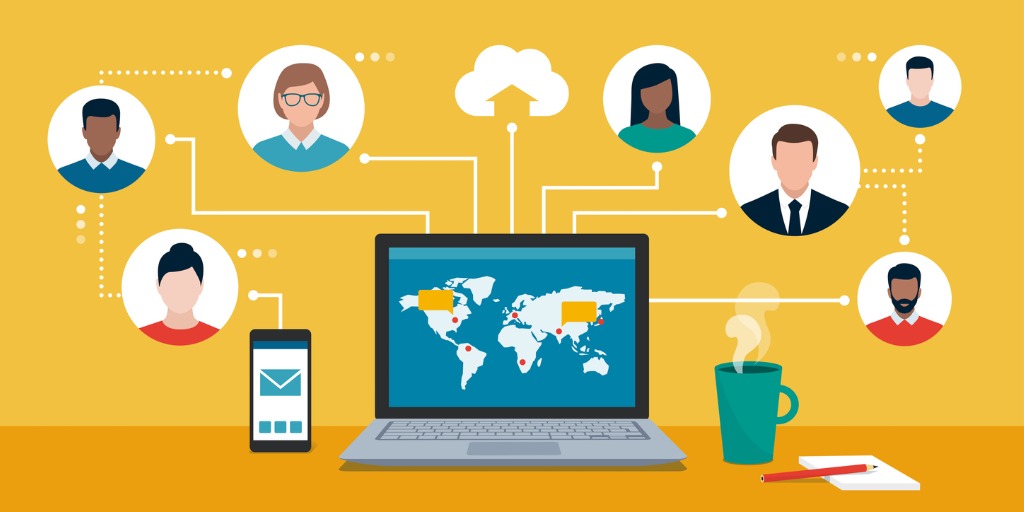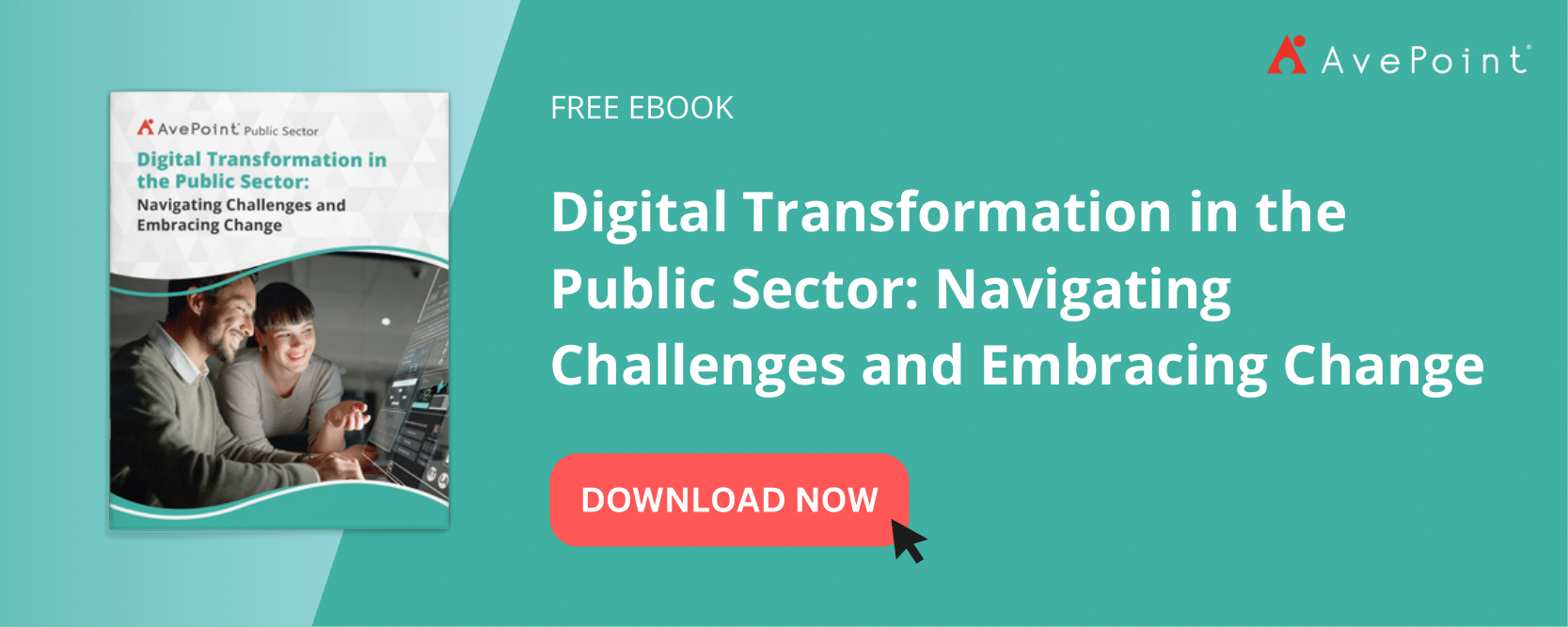It’s a fact: we aren’t going back to how we worked before the pandemic. Employees might be “back in the office,” but it’s in a fundamentally different way. Many of the flexible, remote working options implemented out of necessity almost three years ago have endured.
With the pandemic peak behind us, organisations–including government agencies–finally have breathing space to focus on making this new world of hybrid work as safe and resilient as possible.
But what’s the best way to go about this, and why should the government care?
Let’s dig a little deeper.
Hybrid Work Is Here to Stay
Microsoft research shows that 73 percent of employees and 80 percent of leaders want to keep working flexibly and remotely. On top of that, 41 percent of workers are considering leaving their current employer due to burnout and a lack of workplace flexibility.
From a recruitment and retention perspective, it makes sense that government agencies aren’t rushing to drop hybrid work arrangements. In fact, with workplaces jostling to position themselves as “employers of choice,” finessing hybrid work and optimising the employee experience have become key focus areas.
The challenge here is two-fold:
- How can technology support employees to work securely and efficiently, regardless of where they are?
- How do employees feel like part of a team even if they aren’t physically working side-by-side?
If your agency has been doing the hybrid model for a while, the steps below will strengthen your security position, maximise the value of your investments, foster a positive hybrid work culture, and support collaborative work.

1. Consolidate Cloud Services
When was the last time your agency reviewed its cloud services? If it’s like many other agencies (the average organisation uses 137 SaaS applications, according to a recent report), chances are you can consolidate tools in a unified platform like Microsoft 365.
The benefits of consolidating cloud services include:
- Cost savings – Removing duplicate services means not paying twice for the same functionality while maximising a “use many times” approach.
- Improved productivity and collaboration – An integrated employee experience platform like Microsoft 365 streamlines teamwork and boosts efficiency both internally and across agencies.
- Simplified IT management and security – Using fewer overall services and leveraging the built-in security of Microsoft 365 reduces IT burden, minimises security risks, and supports user confidence in security processes.
Free eBook: Consolidating Cloud Services and Fully Leveraging Microsoft 365
2. Drive Sustainable Adoption
The next step after consolidating cloud services is to make it easy for employees to use the tools available to them. But driving sustainable adoption can be tricky when people:
- Are unsure of best practices – i.e. “I don’t know how we’re supposed to share files, so I’ll send this document as an email attachment.”
- Feel overwhelmed and not wanting to “break” things – i.e. “We use Teams for projects, but I can’t remember which settings to use. I don’t want to make a mistake. I’ll find another way.”
Sustainable adoption happens when people can easily do the right thing. This might be as simple as providing a guide that outlines when to use which tools (i.e., “We use Yammer for chat, Teams for collaboration, etc.”).
Or, it could look like automating processes so non-IT employees don’t have to consider every single setting when navigating Microsoft 365. For example, employees handling confidential information may benefit from built-in policies that help set up new Teams correctly.

Solutions like AvePoint Cloud Governance automate operational governance, with self-service IT resources for provisioning, moving, or restructuring content, as well as lifecycle and permissions management.
3. Protect and Backup Data
Analysts have been stressing for years that organisations need to back up cloud data – and the government is no exception. Many vendors take steps to protect against service disruptions, but they aren’t responsible for recovering lost, deleted, or corrupt content.
When it comes to protecting and backing up data, automation is your best friend. Microsoft 365’s Security and Compliance Centre is an ideal starting point for tasks like setting reminders for expiring content and auto-archiving unused communities/Teams.
But do you understand how long Microsoft retains your data and if that aligns with your needs? Do you have a strategy to cope with the potential loss of data, including items such as Teams chats, Planner boards, or OneNotes to recover from prolonged outages, malicious insiders, hacktivists, malware or ransomware, accidental deletion, departing employees and deactivated accounts, etc.?
Technologies like AvePoint’s cloud backup solution extend the protection to Microsoft Azure workloads to help businesses collaborate with confidence across their Microsoft deployments, including periodic full and incremental backup, cloud-to-cloud backup, granular restore, and full fidelity recovery.
4. Manage Entitlements
Ask any Microsoft 365 administrator and they’ll say licensing is more complex than managing license types, allocation, usage, and costs. There’s often a disconnect between global IT, which owns the licenses, and local business owners, who own the budgets. This can make it challenging to answer questions like:
- What are we licensed for?
- Do users have the services they need? Are they using them?
- Is spending aligned with business needs? How do we know?
Effective entitlements management looks like being able to delegate control to local business owners to avoid IT bottlenecks, as well as providing insights that inform license allocation and support budget and IT alignment.
If you don’t already have this functionality, a Microsoft 365 license management solution such as AvePoint’s Cense may be worth considering.

5. Ensure Collaboration Security
Being able to share information quickly and easily is essential for effective hybrid work. But collaborating securely while maintaining visibility over what is shared externally can be tricky.
Every government agency should dedicate time to finding, prioritising, fixing, and enforcing Microsoft 365 security controls. Some ways to do this include:
- Automation – Can you bulk fix or edit security or permissions issues based on insights? Can you set policies for sharing and guest access that are enforced automatically?
- Reporting – Can you map risk insights to regional or industry regulatory frameworks? How about prioritising critical issues for action?
- Policies – Can you set policies to monitor and control guest access, sharing, and provisioning to prevent configuration drift?
Some of these features are available out of the box in Microsoft 365 but are complex to manage. Solutions like AvePoint’s Policies & Insights for Microsoft 365 make it easy to monitor Microsoft 365 health, prioritise and automate requests, and visualise through a time-based security dashboard.
Where should you go from here?
The world of work might look a little different these days, but a few things are reassuringly familiar: organisations want to be sustainable, adaptable, and resilient to whatever comes their way. They want engaged employees, a thriving culture, and inspiring leaders.
Taking steps to support safe collaboration for hybrid work – whether that’s by consolidating cloud services or tightening security – can help your agency steer its way to a bright future.
Need extra guidance or support? AvePoint is your trusted partner for optimising SaaS operations and securing collaboration. Let’s talk!


